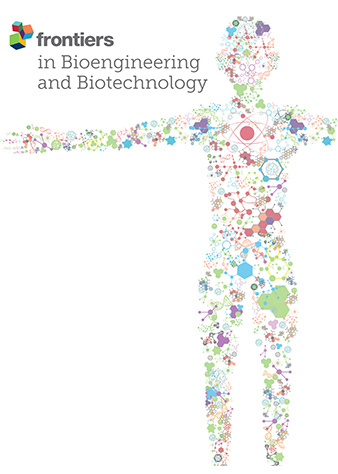基于金纳米结构的生物传感器在检测糖尿病生物标记物方面的最新进展
IF 4.3
3区 工程技术
Q1 BIOTECHNOLOGY & APPLIED MICROBIOLOGY
引用次数: 0
摘要
糖尿病(DM)是一种普遍存在的疾病,迫切需要连续、精确和现场的生物标志物监测设备。由于生物传感器设计前景广阔,对不同生物基质中的糖尿病生物标志物进行连续监测将成为未来的常规工作。最近,在生物传感器受体部分采用不同的纳米材料对智能 DM 监测产生了重大影响。其中,金纳米结构(AuNSs)因其独特的性质,已成为制造精确 DM 生物传感器的极具潜力的材料。本研究介绍了 AuNSs 在检测葡萄糖以及糖化血红蛋白 (HbA1c)、糖化白蛋白 (GA)、胰岛素、胰岛素抗体、尿酸、乳酸和谷氨酸脱羧酶抗体 (GADA) 等其他 DM 生物标记物的生物传感器中的最新应用,重点关注生物传感器性能中最重要的因素,如灵敏度、选择性、响应时间和稳定性。比较研究时使用了检测限 (LOD)、线性浓度、重现性%、回收率% 和检测时间的指定值。总之,AuNS 具有电化学电位窗口宽和电阻率低的特点,与其他生物试剂和/或纳米材料一起,是生物传感器设计的重要工具。本文章由计算机程序翻译,如有差异,请以英文原文为准。
Recent advances in gold nanostructure-based biosensors in detecting diabetes biomarkers
Diabetes mellitus (DM) is a prevalent disorder with an urgent need for continuous, precise, and on-site biomarker monitoring devices. The continuous monitoring of DM biomarkers from different biological matrices will become routine in the future, thanks to the promising biosensor design. Lately, employing different nanomaterials in biosensor receptor parts has had a great impact on smart DM monitoring. Among them, gold nanostructures (AuNSs) have arisen as highly potential materials in fabricating precise DM biosensors due to their unique properties. The present study provides an update on the applications of AuNSs in biosensors for detecting glucose as well as other DM biomarkers, such as glycated hemoglobin (HbA1c), glycated albumin (GA), insulin, insulin antibodies, uric acid, lactate, and glutamic acid decarboxylase antibodies (GADA), with a focus on the most important factors in biosensor performance such as sensitivity, selectivity, response time, and stability. Specified values of limit of detection (LOD), linear concentrations, reproducibility%, recovery%, and assay time were used to compare studies. In conclusion, AuNSs, owing to the wide electrochemical potential window and low electrical resistivity, are valuable tools in biosensor design, alongside other biological reagents and/or nanomaterials.
求助全文
通过发布文献求助,成功后即可免费获取论文全文。
去求助
来源期刊

Frontiers in Bioengineering and Biotechnology
Chemical Engineering-Bioengineering
CiteScore
8.30
自引率
5.30%
发文量
2270
审稿时长
12 weeks
期刊介绍:
The translation of new discoveries in medicine to clinical routine has never been easy. During the second half of the last century, thanks to the progress in chemistry, biochemistry and pharmacology, we have seen the development and the application of a large number of drugs and devices aimed at the treatment of symptoms, blocking unwanted pathways and, in the case of infectious diseases, fighting the micro-organisms responsible. However, we are facing, today, a dramatic change in the therapeutic approach to pathologies and diseases. Indeed, the challenge of the present and the next decade is to fully restore the physiological status of the diseased organism and to completely regenerate tissue and organs when they are so seriously affected that treatments cannot be limited to the repression of symptoms or to the repair of damage. This is being made possible thanks to the major developments made in basic cell and molecular biology, including stem cell science, growth factor delivery, gene isolation and transfection, the advances in bioengineering and nanotechnology, including development of new biomaterials, biofabrication technologies and use of bioreactors, and the big improvements in diagnostic tools and imaging of cells, tissues and organs.
In today`s world, an enhancement of communication between multidisciplinary experts, together with the promotion of joint projects and close collaborations among scientists, engineers, industry people, regulatory agencies and physicians are absolute requirements for the success of any attempt to develop and clinically apply a new biological therapy or an innovative device involving the collective use of biomaterials, cells and/or bioactive molecules. “Frontiers in Bioengineering and Biotechnology” aspires to be a forum for all people involved in the process by bridging the gap too often existing between a discovery in the basic sciences and its clinical application.
 求助内容:
求助内容: 应助结果提醒方式:
应助结果提醒方式:


